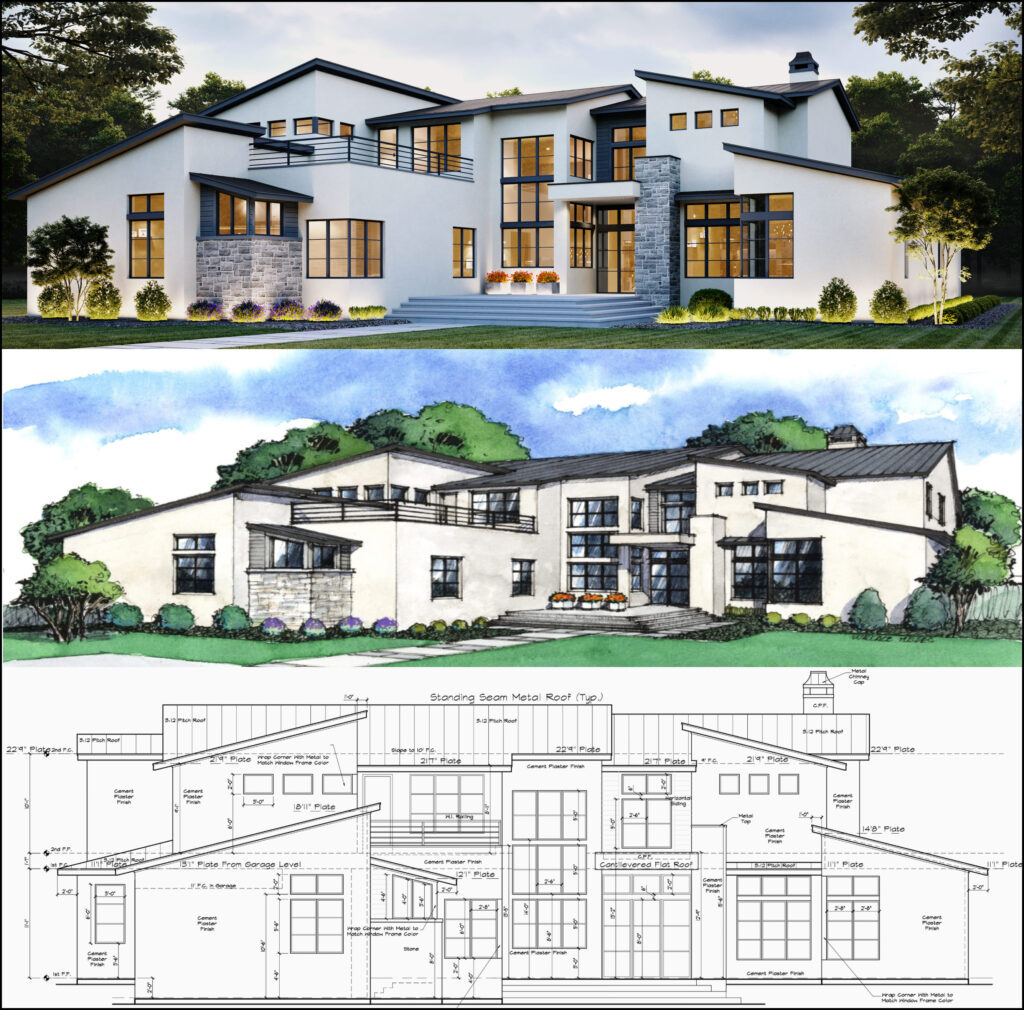Exactly How CDA Architects Integrate Eco-Friendly Practices in Architectural Projects
Exactly How CDA Architects Integrate Eco-Friendly Practices in Architectural Projects
Blog Article
A Comprehensive Summary of Architectural Styles and Their Influence on Modern City Planning and Advancement
Building designs have long offered as a mirror to the social values and technical innovations of their time, playing a vital function in shaping modern-day city planning and development. From the magnificence of Neoclassicism to the utilitarian approach of Brutalism, each design has presented unique ideas that influence metropolitan aesthetic appeals and functionality.
Historical Summary of Building Designs

As cultures transitioned with the Middle Ages, Gothic architecture arised, defined by its verticality and complex detailing, matching the spiritual desires of the age. The Renaissance marked a revival of timeless perfects, merging art and architecture in cutting-edge manner ins which influenced succeeding designs across Europe.

Today, building designs remain to progress, driven by globalization and sustainability problems, reflecting a vibrant interaction between heritage and advancement. This historic summary highlights the value of architecture as a mirror of societal advancement and as a catalyst for urban advancement.
Trick Architectural Styles Explained
The diversity of architectural styles shows the myriad impacts that form our constructed environment, each embodying unique attributes and social values. Trick building designs consist of Classical, Gothic, Baroque, Modernism, and Postmodernism, each representing distinct historical contexts and aesthetic approaches.
Timeless style, rooted in old Greece and Rome, stresses proportion, percentage, and using columns (cda architects). In comparison, Gothic style, flourishing between Ages, is characterized by pointed arches, ribbed safes, and flying buttresses, developing a heavenly quality in cathedrals. Baroque architecture, emerging in the 17th century, is noted by majesty, intricate embellishment, and a vibrant interaction of light and shadow
Modernism, which acquired momentum in the very early 20th century, focuses on feature over type, utilizing new products like steel and glass to develop minimal structures. Postmodernism, reacting versus the austerity of Innovation, accepts eclecticism and historical reference, often including spirited aspects and irony.

Effect on Urban Preparation
In forming the growth of cities, architectural styles considerably influence metropolitan preparation choices. The selection of building design often dictates the visual appeals, performance, and general personality of metropolitan atmospheres.
In addition, building designs can influence zoning laws and land make use of plans. Urban organizers have to take into consideration the dominating building patterns when creating areas, making sure that new advancements balance with existing structures. This consideration fosters natural city landscapes and boosts neighborhood identity.
The implementation of specific building designs can likewise influence socioeconomic factors within a city. High-end modern styles may attract upscale citizens and services, leading to gentrification, while much more affordable housing options may prioritize sensible and sustainable layouts to fit diverse populaces. cda architects. Ultimately, the interaction between building styles and city planning develops dynamic cities that show both historical context and modern needs, forming the lived experiences of their inhabitants
Sustainability and Modern Design
Architectural styles play a pivotal function in addressing modern obstacles, especially in the world of sustainability. As urban locations expand and environmental problems heighten, modern-day architecture progressively embraces sustainable style concepts that prioritize energy efficiency, resource conservation, and marginal eco-friendly impact.
Contemporary building activities, such as biophilic design and eco-friendly style, supporter for structures that balance with their environments, making use of natural materials and promoting biodiversity. These designs often incorporate renewable resource resources, such as solar panels and wind turbines, to decrease dependence on nonrenewable fuel sources and reduced carbon impacts.
Moreover, the combination of sophisticated modern technologies, such as clever structure systems, enhances energy management, optimizing resource usage while guaranteeing passenger convenience. Cutting-edge water monitoring approaches, consisting of rain harvesting and greywater recycling, more add to lasting city settings.
Significantly, sustainability prolongs beyond environmental issues; it encompasses social and economic measurements. By cultivating area wellness and promoting inclusivity, contemporary architectural designs straighten with lasting growth objectives. The advancement of building practices continues to form durable cities that not only fulfill the requirements of the present yet additionally protect the future for generations to come.
Community Involvement in Style
Community involvement in style works go as an essential bridge between engineers and the populations they offer, making sure that the built setting shows the needs and ambitions of its users. This joint process welcomes neighborhood participants to contribute their understandings and choices, fostering a feeling of ownership and obligation towards the areas they inhabit.
Efficient community interaction employs numerous methods, such as workshops, studies, and public forums, to collect diverse point of views. These strategies help with a two-way discussion, allowing engineers to understand regional contexts while encouraging locals to articulate their concerns and wishes. This inclusivity not just enhances the style top quality but likewise advertises social equity by addressing the distinct obstacles faced by marginalized groups.
Additionally, area engagement can cause cutting-edge solutions that might not emerge in a typical design process. By integrating regional expertise and social worths, architects can create areas that reverberate even more deeply with customers, enhancing usability and sustainability. Eventually, focusing on visit their website neighborhood involvement in layout procedures causes environments that nurture social interactions, support well-being, and enhance neighborhood ties, consequently playing an essential duty fit modern-day city landscapes.
Verdict
Building designs have actually greatly affected contemporary city preparation and advancement, showing developing cultural and technical contexts. The assimilation of historic appearances with modern demands cultivates metropolitan atmospheres that prioritize sustainability and community engagement. As cities remain to expand and adjust, the continuous dialogue between building heritage and modern-day style principles will remain essential in developing comprehensive, lively areas that enhance quality of life and advertise social view website equity. The future of metropolitan advancement hinges on this unified balance.
Report this page